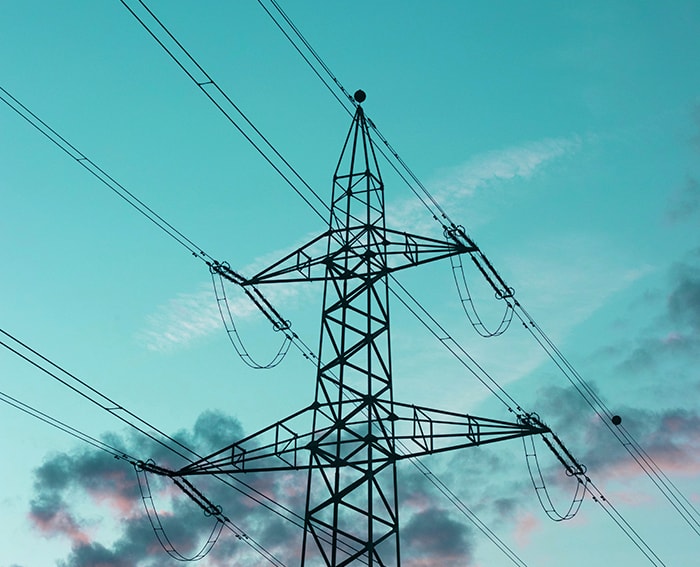If you had told me a single email newsletter would influence almost $1.5 million in revenue in 12 months, I would have said, “I know Sesame Street taught us to reach for the stars — and I trust Elmo and Big Bird more than anyone else to be honest with me about whether an outfit makes me look fat. But there’s a big difference between an aggressive ‘We can do this, team!’ goal and a delusional fever dream born of conceit.”
I mean, let’s face it: The Gmail promotions tab is where 99% of emails (subscriptions and spam) go to die a sad, unopened death, right? The age of the email newsletter is dead.
Or so I thought.
I stand before you today ready to dine on your finest meal of crow. In one year, THE LATEST, IMPACT’s thrice-weekly email newsletter, has 33,000+ subscribers and has influenced $1.496,199.25 in revenue for our company. (We use HubSpot for both our marketing automation needs and our sales CRM, so that revenue number is captured automatically.)
And as the author of THE LATEST, I want to share with you the “E! True Hollywood Story” behind our email’s surprising success story, including:
- Why and how we developed our newsletter strategy.
- The hyper-personalized and purposefully human nature of the email newsletter, and how that has influenced audience engagement.
- My top tips for getting human and personal in your email newsletters, even if you think that strategy won’t work for your industry.
- The most surprising lessons we’ve learned over 150 issues of THE LATEST that every organization can learn from.
OK, let’s get into it!
How THE LATEST Was Born
In August 2018, IMPACT’s brand team — of which I am a member, as our director of web and interactive content — had a big problem.
IMPACT is a digital sales and marketing company. We provide marketing agency services, and we host online and in-person events like Digital Sales & Marketing World and online webinars. And that’s on top of publishing 3-5 articles per day, 365 days a year — even on Thanksgiving, Christmas and New Year’s.
We had become a more mature and complex organization over the past 10 years, and that was really exciting. But between our services, events, and our ever-increasing publication schedule, we were sending more emails to our audience than ever before.
We realized we had to rethink our email marketing strategy entirely. We were running the risk turning off our audience with too many promotional emails.
So we decided to do two things:
- Shut off all instant, daily and weekly “blog digest” emails HubSpot sends out by default — a major traffic-driver for us, since that’s how most of our subscribers were alerted to new content.
- Create a “single source of truth” email newsletter (what would become THE LATEST) that would feature only our absolute best content and event opportunities. And this newsletter would be sent every Tuesday, Thursday and Saturday, with no exceptions. Even on holidays.
Or, as we say on our website, “Delivered three times a week to your inbox, THE LATEST gives you all the latest digital marketing news and insights you need in under five minutes.”
The Anatomy of THE LATEST
Here’s a recent issue of THE LATEST and a deeper look at how we deliver on the promise of a hand-curated, uber-human, “everything you need to know in 5 minutes or less” email newsletter experience.
Each issue opens with a quick “table of contents” of our featured articles for the issue:
Following that is a personalized introduction from yours truly. Sometimes it has to do explicitly with a digital sales and marketing topic; sometimes it doesn’t. (Usually I try to stay on topic in a way that’s contextualized to my personal life, but I’ll talk more about how that works in a later section.)
After that I showcase the three articles I’ve hand-selected for the issue.
With each article, I include a headline, some explainer text, a link to the article itself (both in the headline and at the end of the explainer) and a few related articles and links for further exploring.
Then it’s on to upcoming events.
And then “IMPACTers on the move,” with fellow IMPACTers taking part in events outside of the company.
Then, in the Tuesday edition, I share what I’m reading.
I never, ever link to IMPACT content in this section.
If it’s Thursday, I run a #ThrowbackThursday section.
And in the Saturday edition I replace that section with “Weekend Nonsense,” to help people go into the weekend with a smile on their face.
I cap off every edition with a section called “One Last Thing,” and what I put in that section varies widely from issue to issue.
Sometimes it’s something funny, since I only do “funny” officially in the Saturday issue. Other times it may be an interesting article, an intriguing read or a bit of news that doesn’t really fit into any other category.
OK, Let’s Talk About the Elephant(s) in the Room 
Yes, I write this email newsletter three times a week (every week), on top of my duties as our content director — including managing our content team, developing and executing our content strategy, and co-hosting and publishing Content Lab (a weekly content marketing podcast).
After seeing what goes into THE LATEST, I bet you have a few questions, including these:
- “Is all that effort worth it?” Yes. Not only have I developed personal connections with our audience, but our email newsletter is generating revenue for the organization
- “Do your readers actually want such an extensive newsletter?” Absolutely. Given how often we’re bombarded with doomsday rhetoric about how no one has an attention span anymore, I was initially very skeptical about whether our readers would want a lengthy email.Well, I was wrong.
One of my favorite testimonials we’ve received about THE LATEST is “It’s the only newsletter I read from top to bottom every single time.”
And here’s another one:
“Hi Ms. Murphy,
“I really love receiving your newsletters throughout the week, and I really enjoy the blog posts they link to. Your tone in your newsletters is playful yet informative and I absolutely love reading them — it breaks up the dry-salesy emails that clog up my inbox.”
So, yes. It’s lengthy, and often we promote content that isn’t our own. But our audience has shown us time and again that this approach with THE LATEST works.
And to Samantha Granville’s point in that last testimonial, it’s the human approach that makes THE LATEST worthwhile.
How I Make THE LATEST Human
From the start we had envisioned THE LATEST to be something personal, handwritten by an honest-to-goodness human being — Ann Handley does a great job of this.
But I had zero intention of ever being that “dig deep” author of THE LATEST. Ever. Under any circumstances. Yet here we are.
I wish I could say I had some sort of change of heart, wherein I decided it was time for me to take on a new challenge, but that would be a lie. Instead I was asked by the proverbial IMPACT “powers that be” if I would be interested in authoring THE LATEST.
“I’m not Ann Handley,” I thought. “I don’t have a built-in following. Plus, the thought of smashing the ‘send’ button on an email to tens of thousands of people makes me want to dry heave.”
My answer was wishy-washy (at best) as I tried to talk my way out of doing it. They sensed my fear and encouraged me (see: “voluntold”) to do it anyway despite my misgivings.
They told me: “Follow your instincts. Try new things. Tell your stories.”
And that’s what I’ve done.
Very Human Email Newsletter Examples
It may surprise you to learn that, in a newsletter with a target audience of business leaders, digital marketers and sales pros, I’ve shared stories like:
- That time I moved from Florida in the middle of the night after a terrible breakup in my 20s.
- My journey with weight loss after a soul-crushing experience a little over a year ago.
- How I feel attacked by my Apple Watch’s constant bullying about my movement routines.
- The weird habits that sometimes emerge when I’m struggling with a creative assignment.
I’ve also:
On top of that, everything I feature — every article, every comic, every photo — is utterly and 100% an extension of my personality.
Basically I made the conscious choice that if I was going to dedicate more than six hours a week to this newsletter, I was going to make it as stupidly valuable as possible and make it so it’s undeniably written by me.
Does getting that personal and/or goofy work in a professional newsletter context?
The testimonials I’ve shared thus far are only a tiny sample of the feedback we’ve received over the past year. Plus — once more with feeling — the revenue numbers do not lie.
It’s clear that our hyper-personal, utterly-human, hand-curated approach to email marketing has far exceeded our expectations.
With that said, the success and my ability to experiment with our audience, as well as how personal I can get with them, has improved over time.
Think of Launching This Style of Email Newsletter Like a Relationship
If I were to sit down on a first date and immediately start unloading story after story about breaking up and moving across the country, sobbing about my weight issues at my desk, dancing around in the middle of the night to Andrew WK while working on a project or how I think “bears repeating” is a funny phrase that should go on a shirt …
… well, let’s just say that would be a lot.
When you first start dating someone, you’re both putting your best forward while still getting to know each other. Naturally, over time, you open up more and more. You get more vulnerable. You get closer.
It worked the same for me with THE LATEST.
Our very first issues were all about letting people know what they could expect and then being consistent about it.
Over time I opened up more and was more willing to try new things. And then I watched how my email newsletter “date” (our audience) reacted via the data (open rates, click-through rates, reading vs. glancing stats, etc.) in addition to testimonials.
Your Version of THE LATEST Will Look Different (and That’s a Good Thing!)
You work in a different industry than I do. You play by a different set of rules, and I understand that.
So while all of our audiences are clamoring for email content that’s more purposeful and (most of all) more human, how you rise to that challenge should be unique to your audience, industry and goals.
Just don’t talk yourself out of being personal and relatable before you even try it.
For example, let’s say you’re working in financial services — an industry that is notoriously buttoned-up and subject to a lot of approval and compliance processes.
You could open your own newsletter with stories about being scared as a new parent having to plan to save for college. Or your experience buying your very first house.
Bottom line, although I hope my story of IMPACT’s newsletter inspires you, your version of how you create human email newsletter content for your brand should be different and unique to you, your industry and your audience.
Only then will you break through the noise of your competitors and foster true, human connections with your audience.







